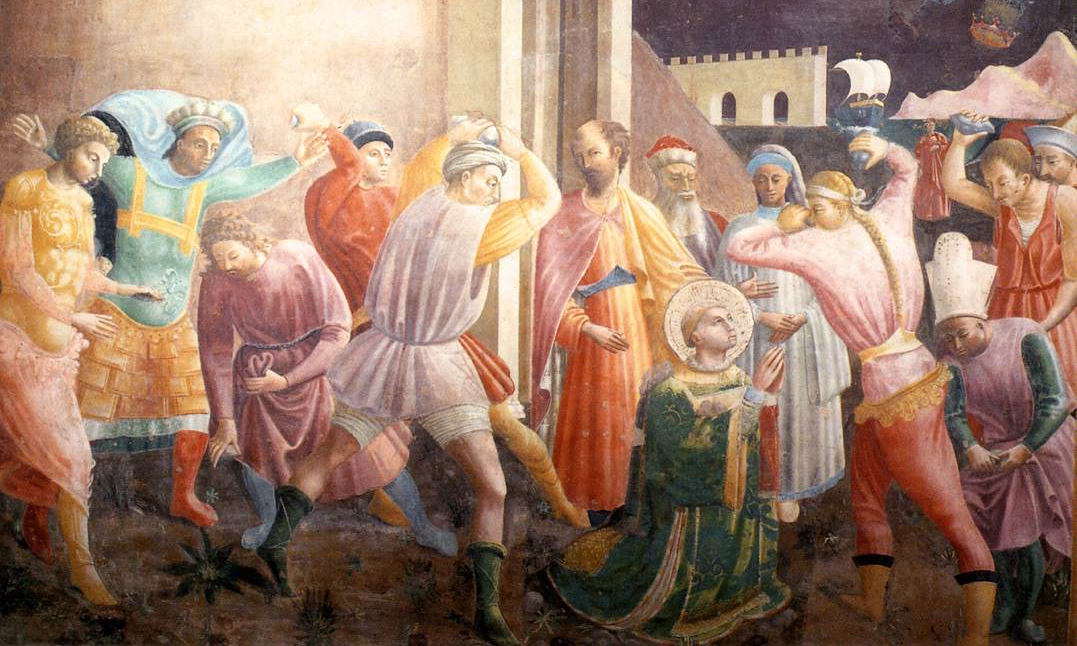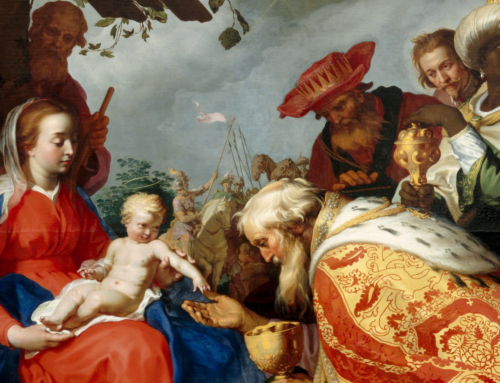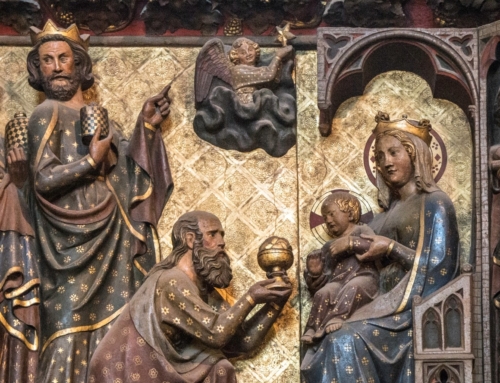Yesterday we celebrated the birth of the Son of God. Today we remember the death of a man. Through Advent we watched for the coming of God, before being surprised to see angelic hosts and to hear the cry of a baby. Now, the day after Christmas, we see a man whose “face was like the face of an angel” (Acts 6:15), and the first sound we hear is his death cry.
Why did Stephen’s face look like an angel’s? Did he regress decades of aging and take on the visage of a putto: “And all were amazed at how adorable he was”? No. When the Scriptures speak of angels, they describe beings of great might, frightening to behold. In the book of Judges, when the mother of Samson is informed by a messenger from God that she will conceive and bear a son, she “went and told her husband, ‘A man of God came to me; he had the appearance of an angel of God, terrible indeed” (Jg 13:6). Zechariah was “troubled” by the angel announcing the birth of his son, John; the shepherds “were struck with great fear”; and even the Virgin Mary needed to be assured by Gabriel, “do not be afraid” (Lk 1–2).
In all these examples, the presence of angels communicates something momentous. Their appearance and words cause fear and unease. Angels correct, instruct, reveal; they make us change our plans and offer us a life more closely united with God. Stephen preached forcefully in the Sanhedrin, calling the people to repent of their hard-heartedness. His words, like the words of angels, caused unrest. His face, like the face of an angel, overwhelmed those gathered. But those listening to Stephen did not (at that moment) repent and acquiesce to the divine words. Instead, when they saw Stephen’s face and heard his words, “they were infuriated” and proceeded to make him the first martyr.
The Church gives us the feast of St. Stephen immediately after Christmas to make something clear. Yesterday, we learned “the son of God became man,” and today we see the purpose—“so that we might become God” (CCC 460). The account of Stephen’s preaching and martyrdom shows us what it looks like to become like God. At the beginning of Christ’s life, his mother laid him on the wood of the manger; at the end of his life, she watched as he suffered on the wood of the cross. On the cross, Jesus prays for his persecutors, “Father, forgive them.” Stephen, too, prays for his killers, “Lord, do not hold this sin against them.” Jesus cried to his Father, “Into your hands, Lord, I commend my spirit.” Stephen cried to Christ: “Lord Jesus, receive my spirit.”
The Psalmist exhorts, “Look towards him and be radiant / let your faces not be abashed” (Ps 34). As Stephen preached, he did not hide his face in shame, and the Lord made his face radiant. Stephen did not produce this radiance; rather it was given to him. But men preferred darkness to light, so they killed him. And in that death he was born to eternal life.
✠
Image: Paolo Uccello, Stoning of Saint Stephen







